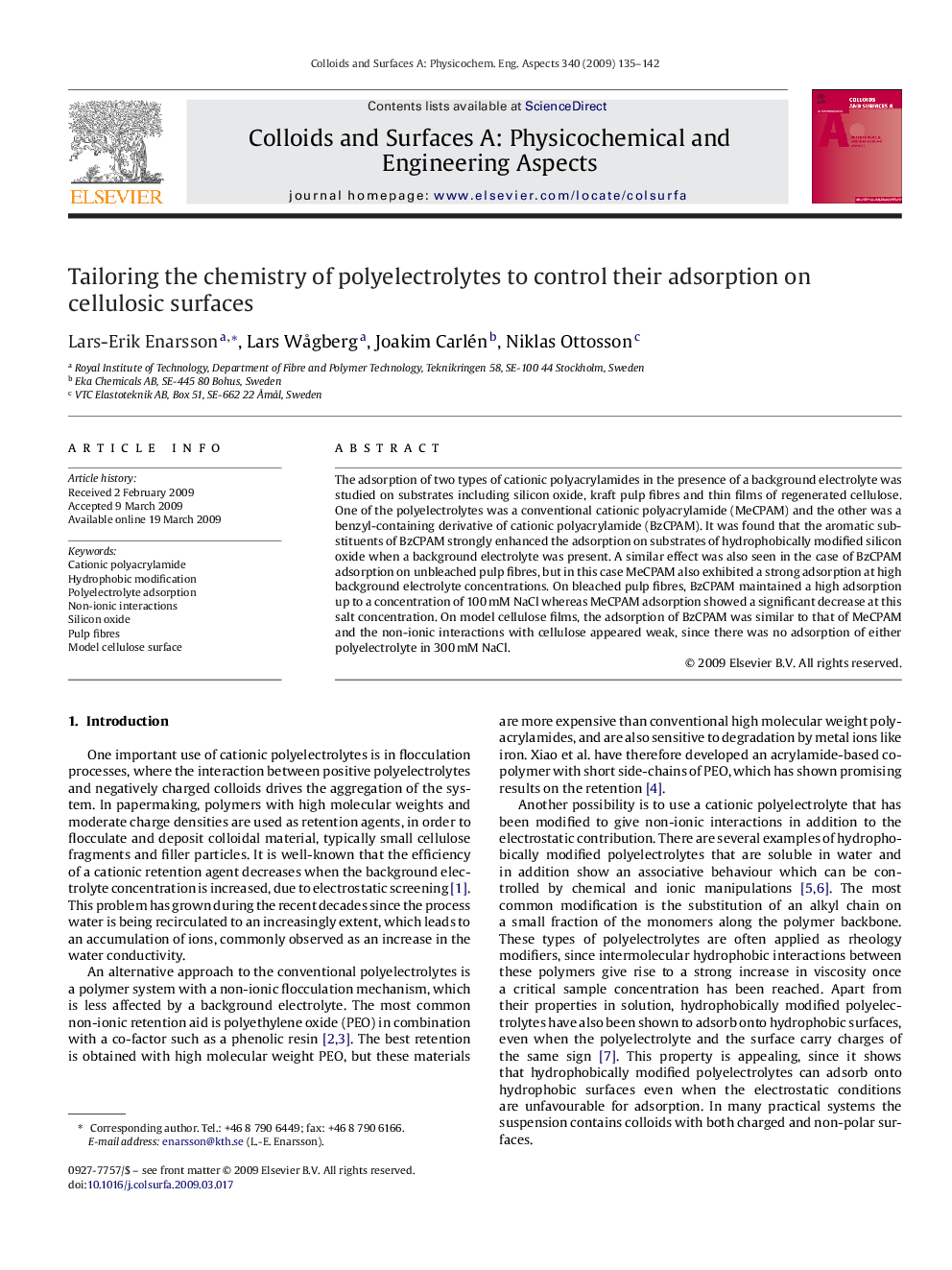| Article ID | Journal | Published Year | Pages | File Type |
|---|---|---|---|---|
| 596015 | Colloids and Surfaces A: Physicochemical and Engineering Aspects | 2009 | 8 Pages |
Abstract
The adsorption of two types of cationic polyacrylamides in the presence of a background electrolyte was studied on substrates including silicon oxide, kraft pulp fibres and thin films of regenerated cellulose. One of the polyelectrolytes was a conventional cationic polyacrylamide (MeCPAM) and the other was a benzyl-containing derivative of cationic polyacrylamide (BzCPAM). It was found that the aromatic substituents of BzCPAM strongly enhanced the adsorption on substrates of hydrophobically modified silicon oxide when a background electrolyte was present. A similar effect was also seen in the case of BzCPAM adsorption on unbleached pulp fibres, but in this case MeCPAM also exhibited a strong adsorption at high background electrolyte concentrations. On bleached pulp fibres, BzCPAM maintained a high adsorption up to a concentration of 100Â mM NaCl whereas MeCPAM adsorption showed a significant decrease at this salt concentration. On model cellulose films, the adsorption of BzCPAM was similar to that of MeCPAM and the non-ionic interactions with cellulose appeared weak, since there was no adsorption of either polyelectrolyte in 300Â mM NaCl.
Keywords
Related Topics
Physical Sciences and Engineering
Chemical Engineering
Colloid and Surface Chemistry
Authors
Lars-Erik Enarsson, Lars WÃ¥gberg, Joakim Carlén, Niklas Ottosson,
